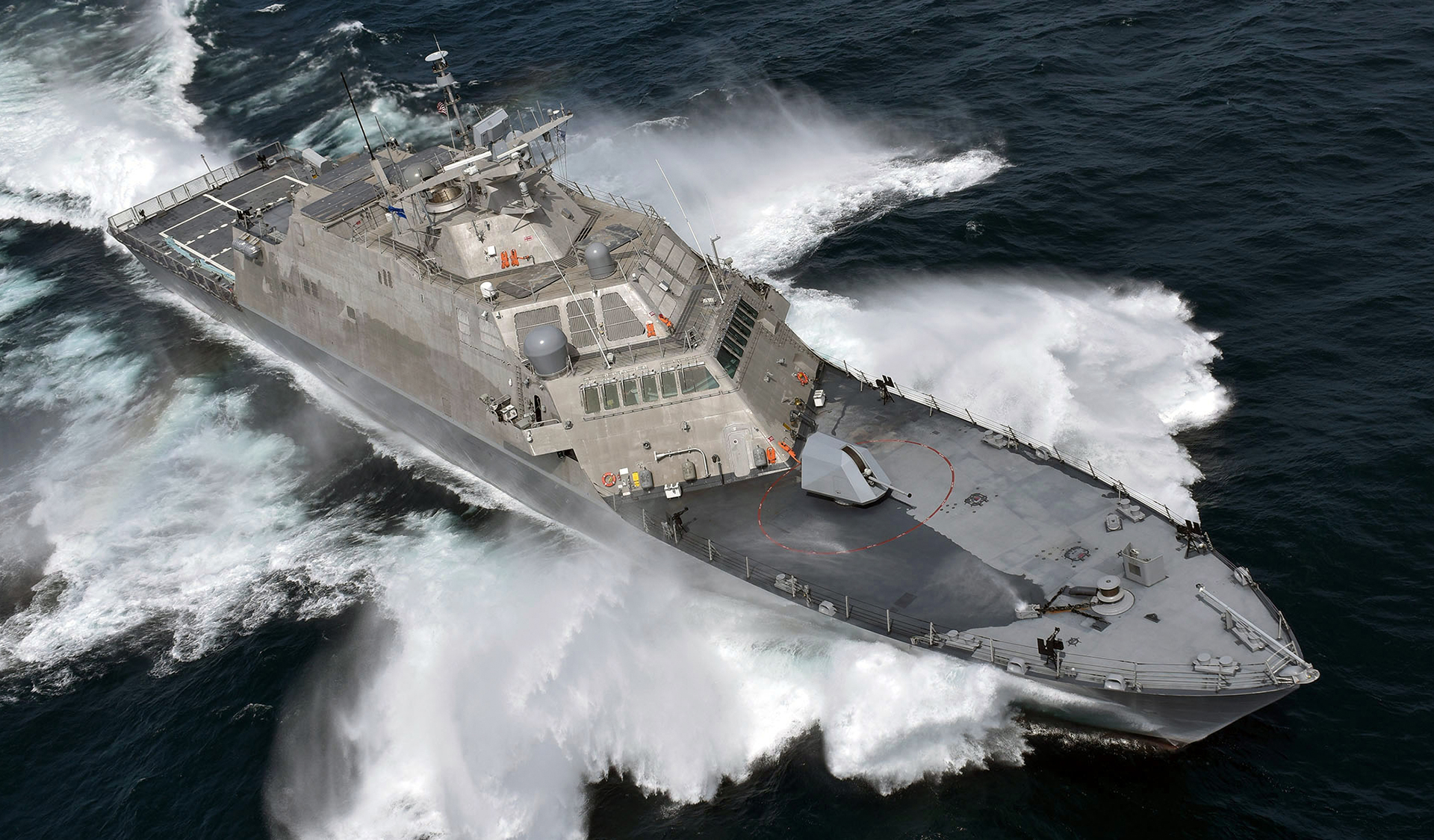Lockheed Martin Rotary and Mission Systems, Baltimore, Maryland, is awarded a $78,530,376 cost-plus-fixed-fee modification to previously awarded contract N00024-18-C-2300 to exercise options for the accomplishment of class design services for the Littoral Combat Ship program. Work will be performed in Hampton, Virginia; Moorestown, New Jersey; Washington, D.C. ; and Marinette, Wisconsin, and is expected to be completed by October 2021. Fiscal 2015 shipbuilding and conversion (Navy) funding in the amount of $13,148,817 will be obligated at time of award and will not expire at the end of the current fiscal year. The U.S. Naval Sea Systems Command, Washington, D.C., is the contracting activity.
The Freedom class is one of two classes of the littoral combat ship program, built for the United States Navy. The Freedom class was proposed by a consortium formed by Lockheed Martin as “prime contractor” and by Fincantieri (project) through the subsidiary Marinette Marine (manufacturer) as a contender for a fleet of small, multipurpose warships to operate in the littoral zone. Two ships were approved, to compete with the Independence-class design offered by General Dynamics and Austal for a construction contract of up to 55 vessels. The ship is a semiplaning steel monohull with an aluminum superstructure. It is 377 ft (115 m) in length, displaces 3,500 metric tons (3,400 long tons), and can achieve 47 kn (87 km/h; 54 mph).

The design incorporates a large, reconfigurable seaframe to allow rapidly interchangeable mission modules, a flight deck with integrated helicopter launch, recovery and handling system, and the capability to launch and recover boats (manned and unmanned) from both the stern and side. The flight deck is one and a half times larger than that of a standard surface ship[clarification needed], and uses a Trigon traversing system to move helicopters in and out of the hangar. The ship has two ways to launch and recover various mission packages: a stern ramp and a starboard side door near the waterline. The mission module bay has a three-axis crane for positioning modules or cargo.
The fore deck has a modular weapons zone which can be used for a 57 mm gun turret or missile launcher. A Rolling Airframe Missile launcher is mounted above the hangar for short-range defense against aircraft and cruise missiles, and .50-caliber gun mounts are provided topside. The Fleet-class unmanned surface vessel is designed for operations from Freedom-variant ships.The core crew is 40 sailors, usually joined by a mission package crew and an aviation detachment for a total crew around 75. Automation allows a reduced crew, which greatly reduces operating costs, but workload can still be “gruelling”.[44] During testing of the class lead, two ship’s companies will rotate on four-month assignments.















